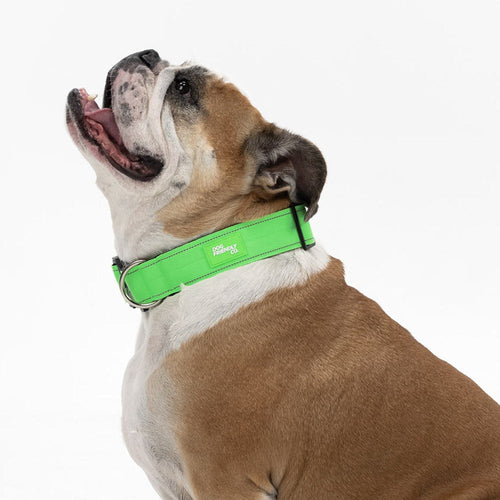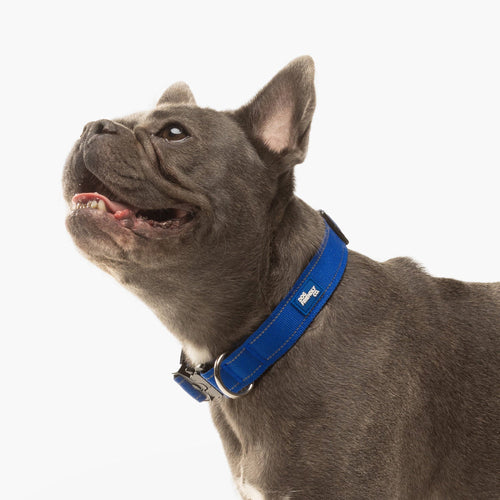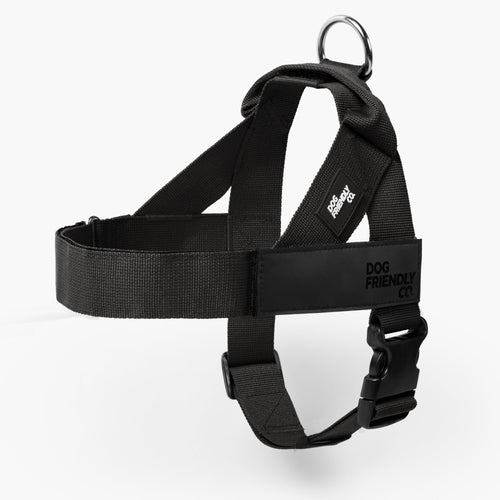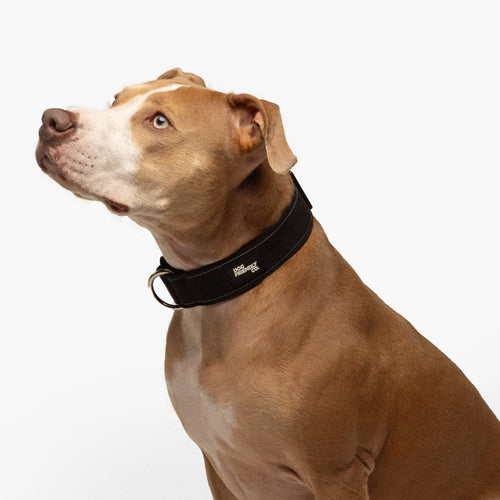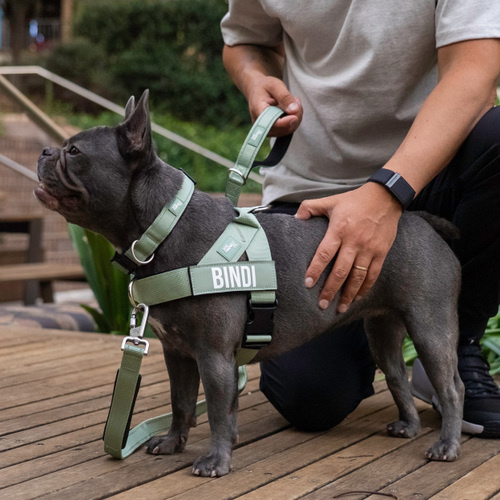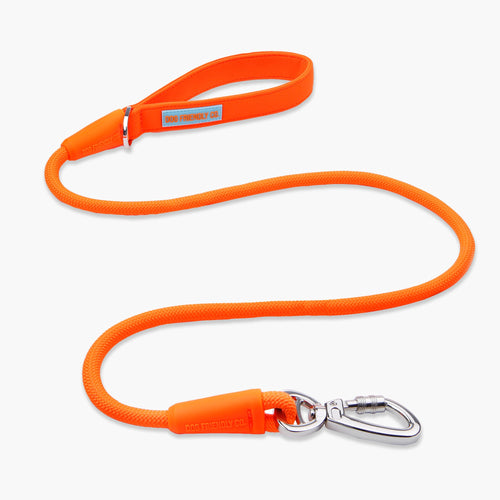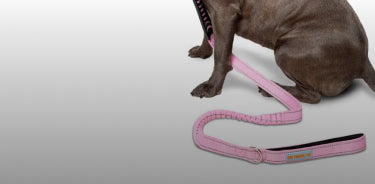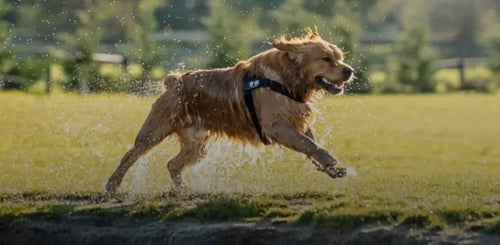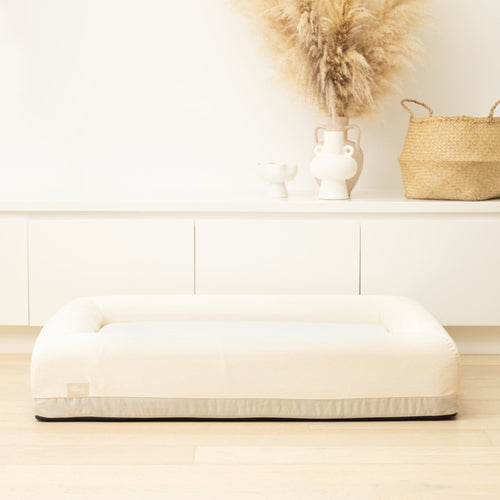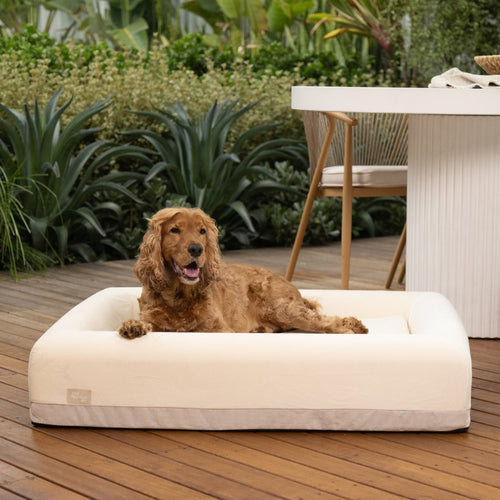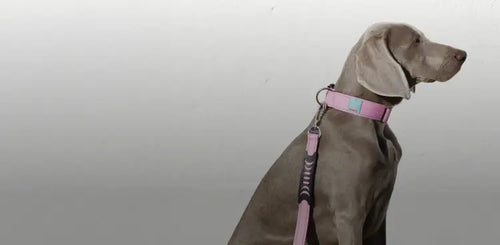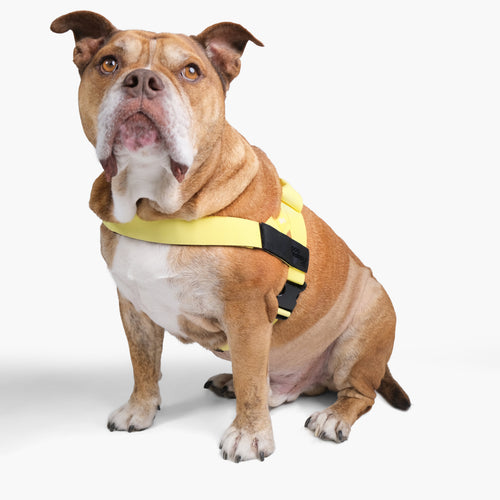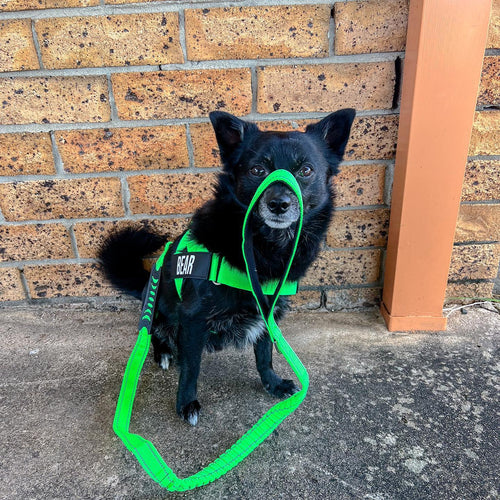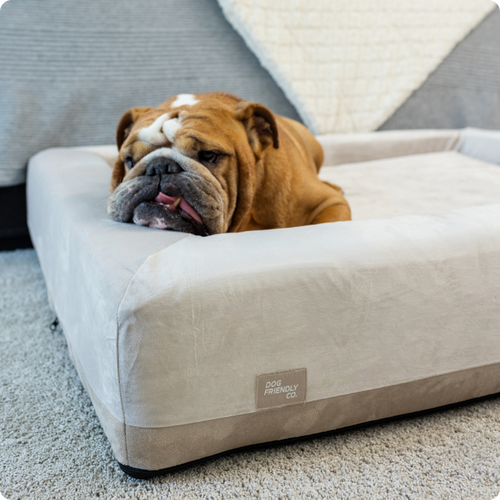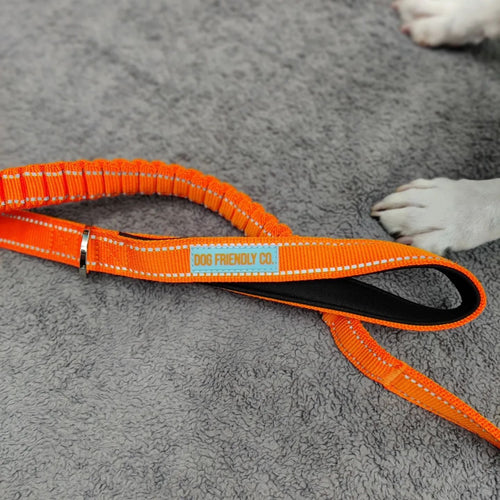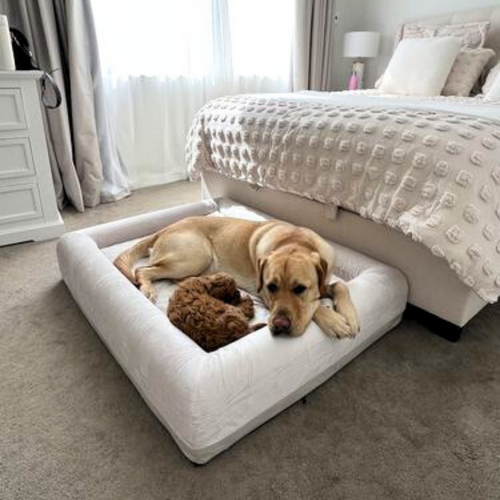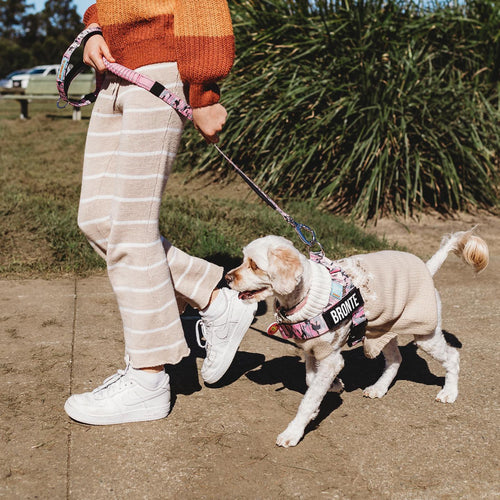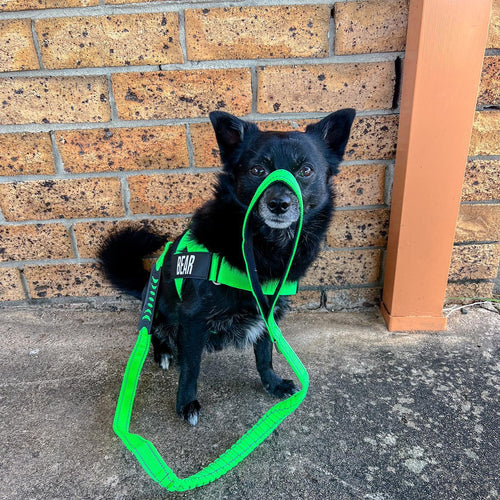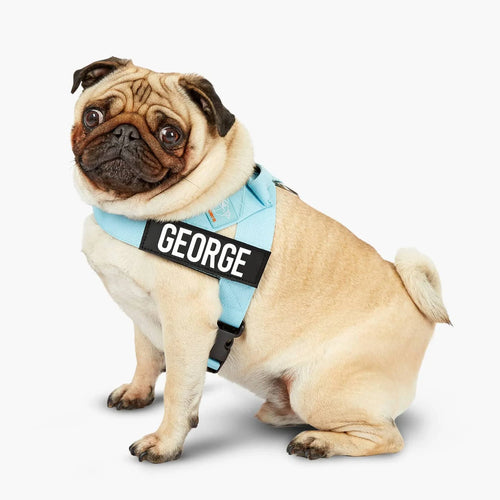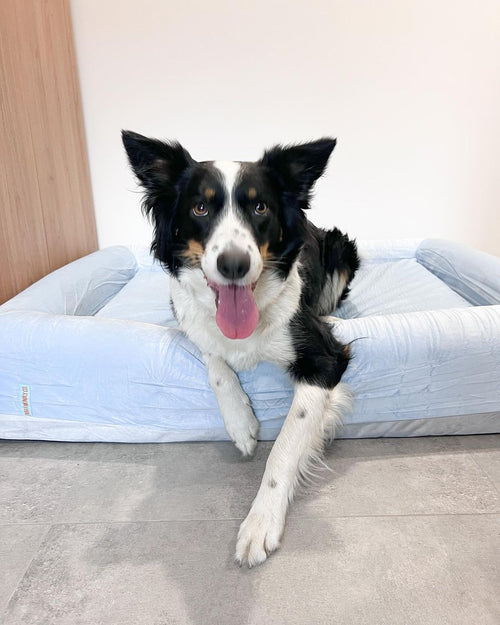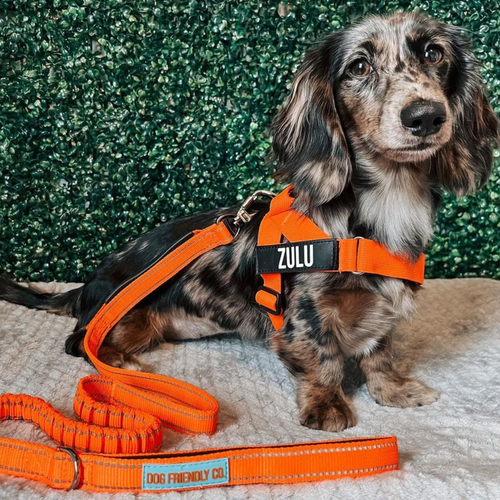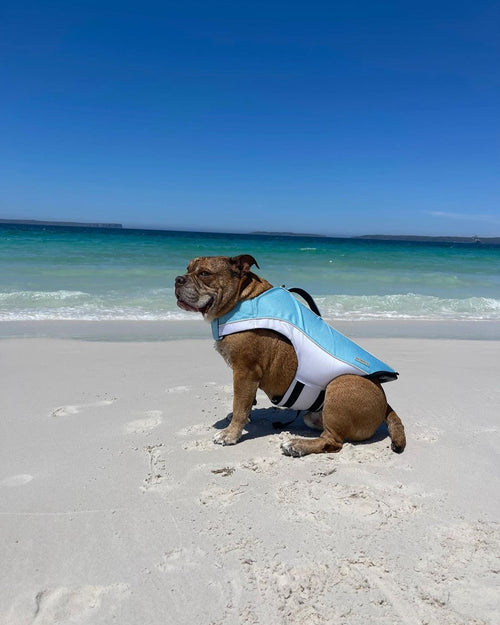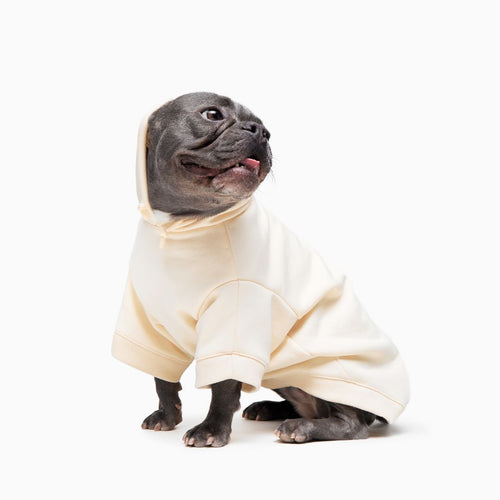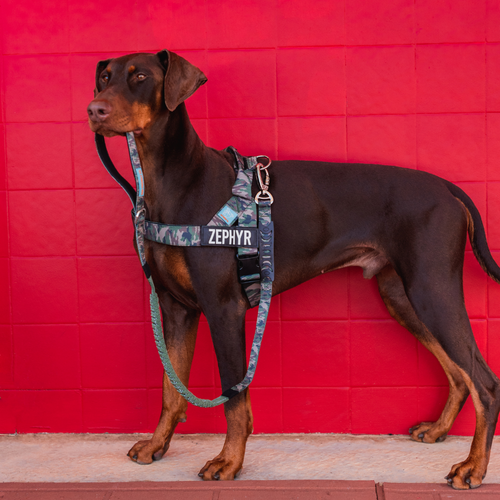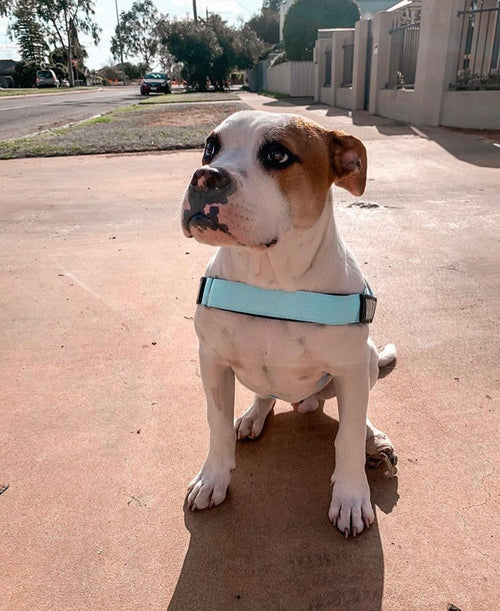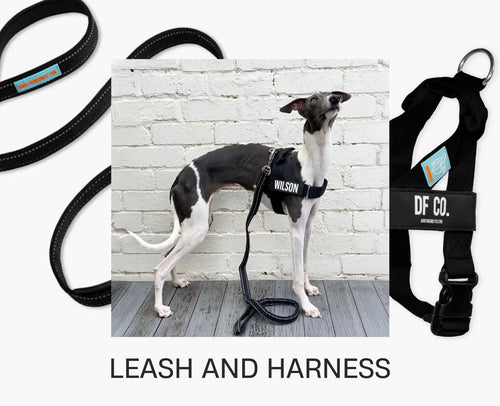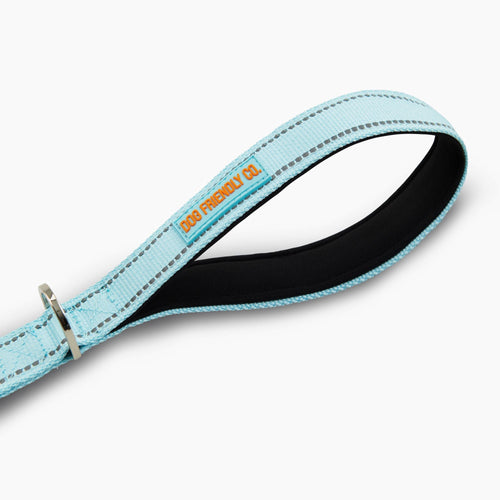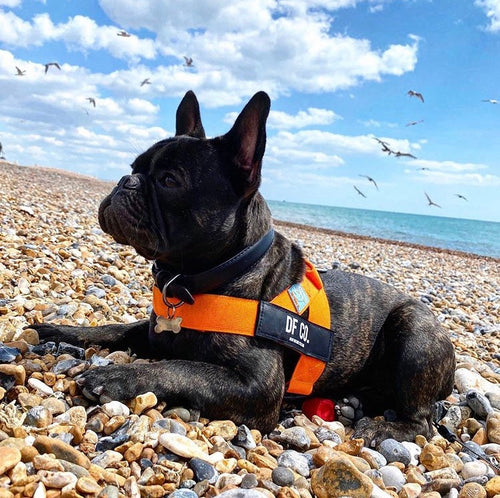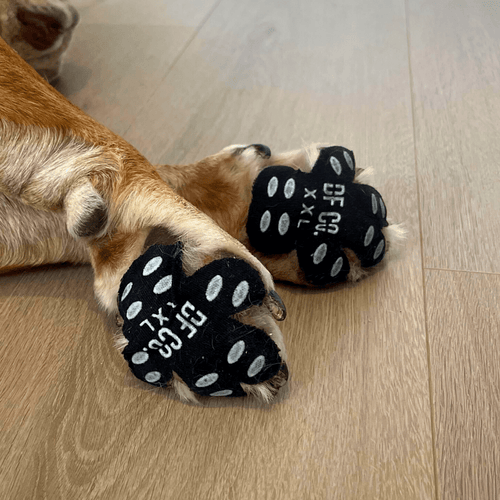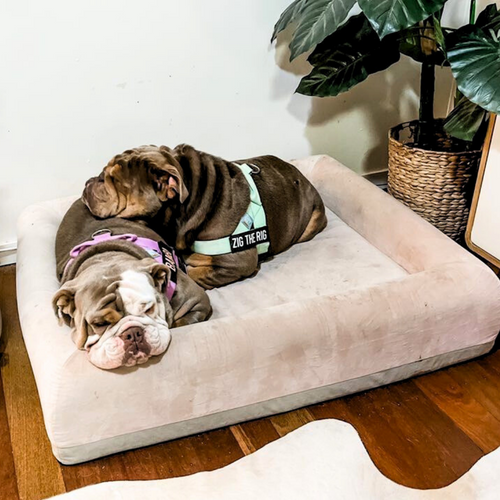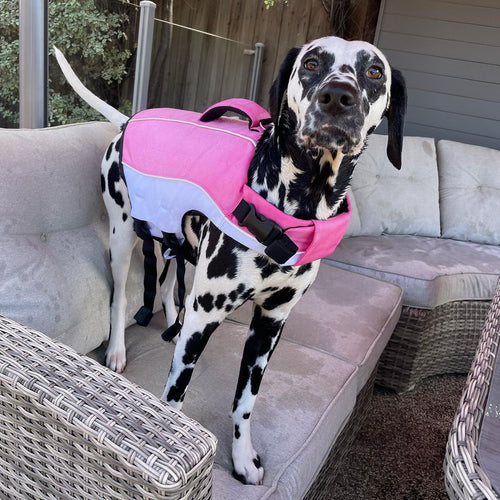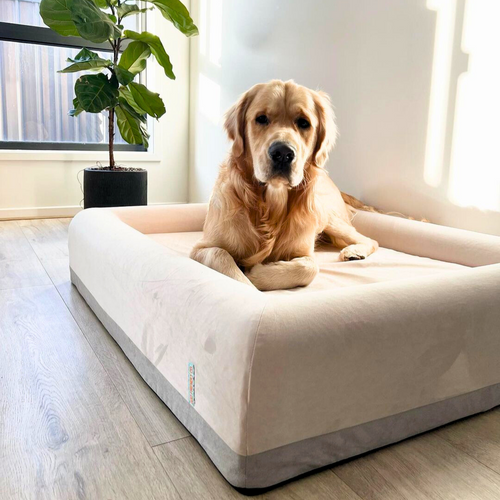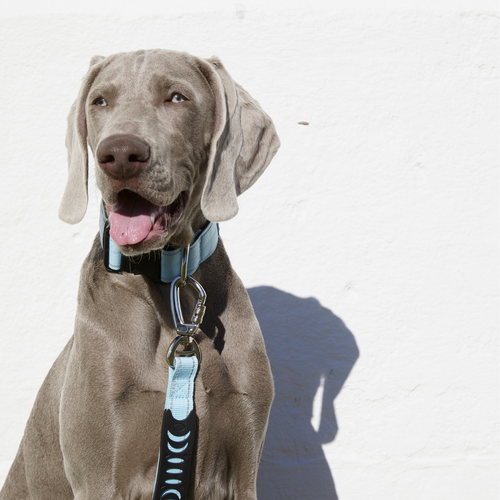A leash should feel like an extension of your hand, steady enough to guide but never yanking or straining. The way you hold the dog leash plays a bigger role in control (and avoiding a face-first tumble) than you might think.
Holding a leash properly isn’t just about keeping your dog from darting off; it’s also about your own safety. A poor grip or using the wrong technique can lead to strained wrists, rope burns, or losing control altogether. The good news? A few simple adjustments can make your daily walks smoother and a whole lot more enjoyable for both of you, too.
Why Proper Leash Holding Matters
If your walks feel more like a battle for control than a smooth stroll, your grip on the leash might be the issue. Holding it the right way is about more than just comfort; it’s what keeps you in control and your dog safe.
Safety for You and Your Dog
Having a secure grip helps prevent the leash from slipping through your hands if your dog suddenly pulls or lunges. Whether it’s a possum, another dog, or just an exciting smell, unexpected movement is bound to happen, and a steady hold means you can keep your walks from turning into a chase.
Better Control, Better Walks
The way you hold the leash affects how well you’re able to guide your dog, too. A loose or awkward grip makes it harder to communicate through the lead, while proper handling lets you steer your dog smoothly, encourage good behaviour, and avoid mishaps like getting tangled around a lamppost.
Less Strain, Fewer Aches
Gripping the leash incorrectly can put unnecessary strain on your hands, wrists, and even shoulders, especially if you’ve got a strong puller. Holding it properly distributes the force more evenly, which means you’ll have better control and avoid soreness after every outing.
How to Hold a Dog’s Leash the Right Way
With just a few simple adjustments, you can improve your control, prevent strain, and make walks more enjoyable.
Pick the right leash for your dog.
Start by picking a leash that suits your dog’s size, strength, and walking habits. A lightweight leash works well for smaller breeds, while a thicker, sturdier one gives better control over strong pullers. Also, be sure to check for fraying, weak spots, or worn-out claps—no one wants a leash snapping at the worst possible moment.
Use a firm but relaxed grip.
Slip your thumb through the loop and wrap the leash around your palm to keep it steady without squeezing too hard. A death grip is going to lead to tired hands and less flexibility when you need to adjust quickly, so it’s best to keep your hold firm but relaxed for better control and comfort.
Use both hands for extra control (when needed).
Does your dog like to pull or lunge? Try placing one hand close to the collar and the other further up the leash for better leverage. This technique helps keep them steady without yanking or relying solely on upper body strength.
Keep it short—but not too tight.
A leash that’s too loose gives your dog too much room to dart off, while one that’s too tight can make them feel restricted. It’s best to aim for a balance; that means having enough slack for natural movement but keeping the leash short enough to make sure your dog stays in check.
Stand tall and stay aligned.
Lastly, hold the leash in your dominant hand and walk with your dog at your side rather than letting them drag you along. Keep your posture upright to ensure better control and prevent any unnecessary strain on your arms and shoulders.
What You Might Be Doing Wrong
A good leash grip keeps you in control, but a bad one? That’s how you end up with rope burns, yanked shoulders, or an unexpected sprint. Here’s what not to do if you want to keep your walks smooth and safe:
Wrapping the leash around your hand.
It might seem like a secure way to hold on, but if your dog ever takes off, that tight wrap is going to leave you with burns, bruises, or worse, a sprained wrist. Instead, loop the leash through your thumb and hold it firmly without trapping your hand.
Holding the leash a little too loosely.
A loose grip might feel more relaxed, but if your dog suddenly lunges, the leash can slip right through your fingers. We recommend keeping a steady hold with just enough tension, so you can react quickly if needed—without clenching like you’re holding onto a rollercoaster bar.
Letting the leash get too long.
Long, dragging leashes make it harder to guide your dog and easier for them to get tangled around poles, people, or their own legs. Give your dog enough slack to move naturally, but not so much that they can wander into trouble.
Using the wrong leash for the situation.
We generally don’t recommend a lightweight leash for dogs who are strong pullers, especially bigger breeds. A flimsy leash can snap under pressure, leaving you with no control. On the other hand, an overly thick or heavy leash can be awkward for a small dog. The right leash should match your dog’s size, strength, and walking style so you can keep a steady grip without struggling.
Techniques for Handling Different Dogs
Walking a dog means understanding who’s on the other end of the leash. A steady grip that works for a slow-moving senior simply won’t cut it for an excitable pup who treats every walk like the main event. Different dogs need different handling techniques—here’s how to adjust:
For Small Dogs
A lightweight leash is your best bet, but that doesn’t mean holding it lightly. Small dogs can also be quick and unpredictable, so having a firm grip ensures you’re in control without being too restrictive.
For Strong or Large Dogs
A single-handed hold isn’t always enough. Using both hands or opting for a leash with a secondary handle will give you extra leverage if your dog decides to test their strength.
For Reactive Dogs
Keeping the wash short makes it easier to manage sudden movements. Just make sure to stay alert and ready to redirect your dog’s focus before they get too fixated on distractions.
For Puppies
Short, controlled movements help steer your pup in the right direction. Gentle tugs and clear guidance, along with being consistent from the get-go, will teach them how to walk on a lead without turning every outing into a test of patience.
Tips for Protecting Your Hands and Wrists on Walks
A leash should keep you connected to your dog—not leave you with aching wrists and sore fingers after every walk. Here’s how to keep your hands comfortable and injury-free:
Keep your wrist neutral.
Holding the leash with your wrist bent at an awkward angle might not seem like a big deal, until you start feeling the strain halfway through the walk. Keep your wrist in a neutral position, with a relaxed but firm grip, so you can handle any sudden movements without putting unnecessary pressure on your joints.
Stand with a stable stance.
If your dog suddenly pulls, a stable stance helps you stay upright instead of being yanked off balance. Keep your feet shoulder-width apart and your knees slightly bent—this helps absorb any unexpected yanks. It’s especially helpful when your dog spots something very exciting (or highly suspicious) up ahead.
Wear gloves for protection.
Leash burns and blisters have a way of creeping up on dog owners, especially when you have a strong puller or love going for long walks. A good pair of grippy gloves can save your hands from friction and make holding the leash a lot more comfortable. They’re also a lifesaver in cold weather when your fingers don’t want to cooperate.
Tools That Make Leash Handling Easier
A good leash setup doesn’t just keep your dog in check—it also saves your hands, wrists, and patience. These tools may be able to help:
Leashes with Padded Handles
If long walks are leaving your hands feeling sore, a paddled handle can make a huge difference. The cushioning helps absorb some of the pressure, making it more comfortable to hold, especially if your dog likes to throw in the occasional surprise tug.
Dual-Handle Leashes
These are great for moments when you need extra control, such as crossing busy city streets or navigating past distractions. The second handle, positioned closer to your dog’s collar, gives you a firmer grip when needed to keep things steady without having to reel in metres of leash.
Hands-Free Leashes
Perfect for runners, parents pushing prams, or anyone who likes to sip a coffee while walking. These leashes clip around your waist or shoulder, keeping your dog secure while leaving your hands free. Just be mindful of sudden pulls—having your dog’s strength directly tied to your body may take you by surprise if they spot something exciting in the distance.
Retractable Leashes (Use with Caution)
While they offer more freedom, retractable leashes can be risky in busy areas as they usually make it harder to reel your dog in quickly before they get tangled around people, poles, or other dogs. If you prefer to use one, stick to open spaces and always check that the locking mechanism works properly.
Teaching Your Dog to Respond to Leash Control
A leash isn’t just a tool—it’s a conversation between you and your dog. The trick is making sure they’re actually listening.
Start with Basic Training
Dogs aren’t born knowing how to walk nicely on a lead, so it’s up to you to show them the ropes. Commands like heel or wait help them understand what’s expected of them, making your walks less of a guessing game. Just make sure to keep your cues consistent so they learn faster and don’t get confused.
Use Positive Reinforcement
A little praise (or a well-timed treat) goes a long way. Rewarding your dog when they walk calmly by your side reinforces the positive behaviour. The more they associate good walking habits with something positive, the less they’ll be tempted to drag you down the street.
Gradual Exposure
A quiet backyard or a calm street is the perfect training ground before taking on the distractions of a busy park. It's generally best to start in a low-key environment, and then slowly introduce more signs, sounds, and smells. The goal here is to help your pup focus on you, no matter what’s happening around them.
Advanced Techniques for Better Leash Handling
For those moments when your dog decides the leash is just a suggestion, these tips can help you stay in control without turning every walk into a wrestling match.
Short-Leash Walking
Keeping the leash short doesn’t mean keeping it tight; it just means you’re giving your dog enough room to move without letting them take charge. This is especially handy in busy areas where weaving through crowds is part of the deal.
The Stop-and-Go Method
If your dog thinks pulling will get them where they need to faster, this method will prove them wrong. The idea is simple: the second they start pulling, you stop. No words, no tugging—just stand still and wait. When the leash slackens, you start moving again. This will likely take a few tries (and a lot of patience!), but your dog will eventually pick up that charging ahead will get them nowhere.
The Loop Technique
Got excess leash flapping around? Instead of wrapping it around your hand, create a loose loop and hold it securely in your palm. This keeps things tidy while still allowing you to adjust the length if needed. It’s a great way to manage leash length without losing grip or getting tangled.
Signs It’s Time to Call in a Pro
Sometimes, no matter how much effort you put in, your walks still feel like a constant battle for control. If your dog’s strength or enthusiasm is leaving you sore, frustrated, or wondering why you ever thought this would be a relaxing activity, it might be time to bring in a trainer.
Professional help can make a real difference if your dog constantly pulls, lunges, or ignores leash cues. It’s also worth considering if holding the leash is causing strain on your hands or wrists. A trainer can teach you handling techniques that suit both you and your dog to make walks more enjoyable for everyone.
Getting Your Leash Hold Just Right
A good leash hold isn’t just about grip; it’s about confidence, comfort, and making walks enjoyable for you and your dog. Holding too tight can leave your hands aching, while a loose or awkward grip can make sudden pulls harder to manage. Finding that sweet spot means better control, less strain, and fewer frustrating tugs along the way.
Like any other skill, leash handling gets better with practice. Small tweaks to your grip and posture can turn an unpredictable, stressful stroll into a smooth, controlled walk. And when you and your dog are in sync, every outing becomes more than just exercise but also quality time together, one step at a time.

















